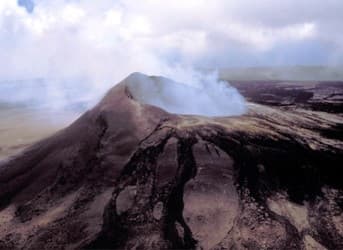In the ongoing energy debate about fossil fuels versus renewables, solar and wind renewable sources have a shortcoming – the sun doesn’t always shine, the wind doesn’t always blow.
Three renewable resources, in contrast, can provide electricity 24/7 – hydroelectric, wave and geothermal. A major plus side for all three is that, like nuclear power, they emit zero greenhouse gases.
While geothermal use is still a fraction of wind and solar, it is drawing increasing interest in the year of its centenary, when the world’s first commercial geothermal power plant opened in 1913 in Larderello in the Tuscany region of northwestern Italy, generating 250 kilowatts.
In 2006 the U.S. government’s National Renewable Energy Laboratory released a report, “Geothermal - The Energy Under Our Feet,” which surveyed domestic geothermal resources. The NREL report estimated that 26,000 megawatts of geothermal power could be developed by 2015, with direct use and heat pumps contributing another 20,000 megawatts of thermal energy, projecting that by 2025 more than 100,000 megawatts of geothermal power could be in production, with direct use and heat pumps adding another 70,000 megawatts of thermal energy.
Related article: Ethiopia to Build Africa’s Largest Geothermal Plant
These goals were obviously not met – the U.S. Energy Information Administration reported that in 2012, U.S. power plants used renewable energy sources — water (hydroelectric), wood, wind, organic waste, geothermal, and sun — to generate about 12 percent of the nation’s electricity, for which geothermal made up a miniscule 3 percent of that total. The EIA “Energy in Brief” publication identified two major roadblocks to more national use of renewables - renewable energy technologies are often expensive and renewable resources are often geographically remote.
Despite such potential drawbacks, the use of geothermal power has grown steadily in the U.S., with geothermal electricity being produced in eight states and 23 foreign countries, while nearly 40 more countries have projects at some stage of development.
Of those eight states, Hawaii is perhaps the most interesting.
Because Hawaii is isolated from the U.S. mainland, its energy infrastructure and consumption are unique among the states. With its mild tropical climate, in 2010 Hawaii had the third lowest per capita energy use in the country.
If that’s the good news for Hawaiians, the bad news is that in 2010 Hawaii imported 94 percent of its energy and had the highest electricity prices in the country. Accordingly, geothermal power would seem to be the answer to a power company’s prayers.
But the reality is that people living close to the existing geothermal energy site in the Puna district of Hawaii Island see geothermal energy as a dangerous threat that could injure and kill.
What is it that worries residents of the Big Island’s Puna district?
Leaks of hydrogen sulfide (H2S), a gas emitted from active volcanic vents, which can also be released from a geothermal site and drift downwind if there is a leak or accident.
Related article: Geothermal Energy: More Exciting than Media Thinks
The health effects of H2S, which works like carbon monoxide or cyanide gas on the human respiratory system, depend on both the concentration and the duration of exposure. Low levels may irritate the eyes and the respiratory tract, while sufficiently high levels can kill. According to the Environmental Protection Agency’s Guideline Limits on exposure to H2S, people exposed to an H2S concentration of 76 parts per million for 10 minutes “could experience life-threatening health effects or death,” as would people exposed to 31 ppm for eight hours.
Puna’s worst geothermal incident occurred in 1991, when a pressure pipe ruptured and vented over a ton of H2S into surrounding neighborhoods, resulting in at least 75 Puna residents being evacuated from their homes for several days.
The Puna facility, operated by Hawaii Electric Light Co., now generates 38 megawatts, intends to increase its capacity to provide up to 50 additional megawatts to its island-wide transmission grid.
It will be interesting to watch how HELCO’s expansion plans navigate through the relevant state offices, as well as how much opposition they will generate. If geothermal power doesn’t pan out, well, because Hawaii has some of the most powerful waves per square meter in the world, numerous wave energy projects are being proposed and implemented off the state’s coasts.
By. John C.K. Daly of Oilprice.com


















